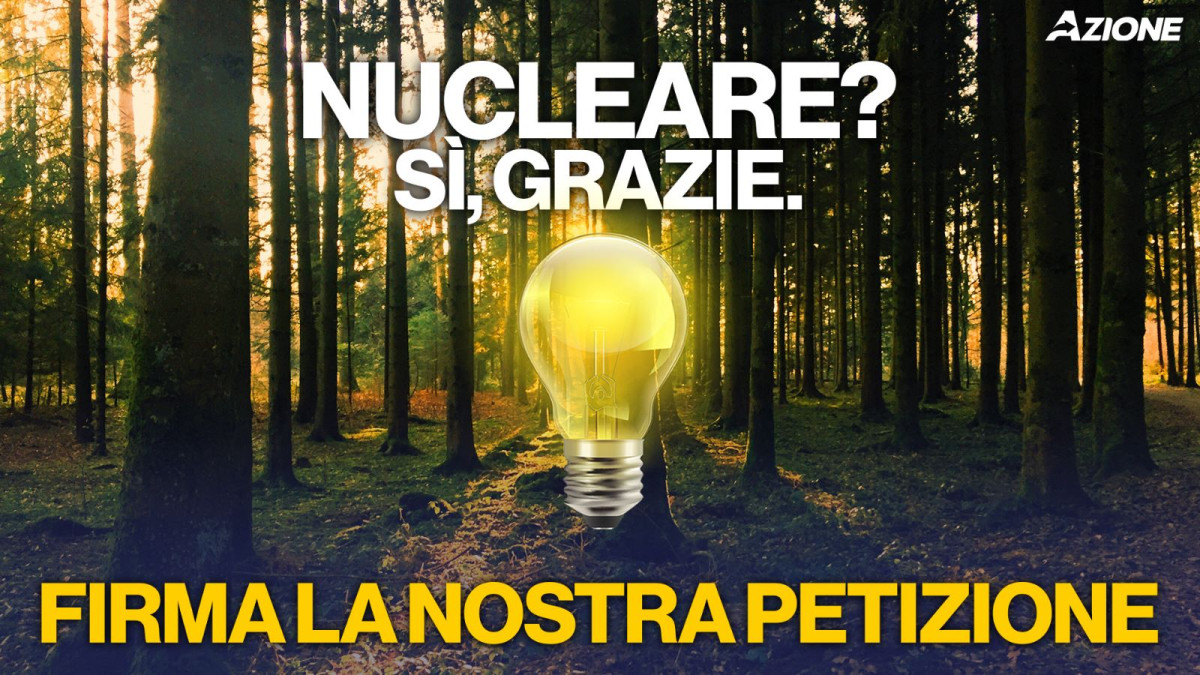Q&A – Italy considers controversial return to nuclear power
Why is Italy considering a return to nuclear energy now?
Italy's renewed consideration of nuclear energy is driven by a complex mix of factors tied to the country's energy strategy, economic needs and political landscape. Advocates firstly present it as a low-carbon option that can help the country meet its climate commitments and the broader goal of achieving carbon neutrality by 2050. Looking toward a future dominated by the intermittent renewables sources solar and wind, they see it as a critical solution for stabilising the power grid. Secondly, energy costs in Italy are among the highest in Europe, partly due to its dependence on imported gas. Proponents argue that nuclear energy could stabilise power prices in the long term, and thus ensure that the competitiveness of Italy’s industry remains on a par with European rivals. Additionally, they hope to revive a historically and economically significant sector in the country. Last but not least, nuclear energy is also seen as a means to reduce reliance on imported natural gas and to increase independence. Italy imports around 75 percent of the energy it uses, leaving it vulnerable to price fluctuations and geopolitical tensions on international markets, such as those seen during the Ukraine war. Italy’s nuclear considerations are also part of a broader international discussion, as many countries plan to increase their use of nuclear, for example Poland and the U.S.
The push for nuclear energy in Italy intensified after the sharp drop in Russian gas imports as a consequence of the Ukraine war highlighted the issue of energy security. This shift has been driven by right-wing parties, particularly Fratelli d’Italia and the Lega, as well as by centre-right parties like Azione, led by Carlo Calenda, a long-time supporter of nuclear energy. Prime minister Giorgia Meloni, during the COP29 climate conference in Baku, advocated for the use of nuclear energy as an alternative to fossil fuels. Parties supporting a return to nuclear energy in Italy hold a substantial majority in parliament: Over 60 percent of deputies and senators are affiliated with coalitions that are, in some form, in favour of nuclear energy, according to estimates by Pagella Politica.
But even before the Ukraine war, nuclear energy had re-entered political discussions in the country, spearheaded by former minister of environment Roberto Cingolani, who highlighted technologies like fourth-generation reactors that are under development to improve safety and sustainability, and to reduce costs.
What are Italy’s current energy policies and plans?
Italy’s energy policies, outlined in the National Energy and Climate Plan (NECP), focus on transitioning to renewables to achieve decarbonisation targets. By 2030, the country aims to install 131 gigawatts (GW) of renewable capacity, primarily from solar (79 GW) and wind (28 GW), overcoming challenges like permitting and grid modernisation. The country plans to phase out Russian gas by 2025, increase LNG imports and strengthen pipeline agreements with Algeria and Azerbaijan.
For the first time since the decommissioning of its nuclear power plants, the technology has now re-entered strategic discussions. According to the NECP and environment and energy security minister Gilberto Pichetto Fratin, Italy could install 8 GW of nuclear capacity by 2050, which would cover over 10 percent of its electricity demand. This share could exceed 20 percent with advanced technologies like small modular reactors (SMRs), which are designed to be built cost-effectively in a factory but remain under development, and future Generation IV solutions. "We must ensure that our production system has the same competitiveness as other European companies, which objectively face lower energy costs than Italian companies. Therefore, all viable solutions to support Italian industry will be pursued, including the development of nuclear energy," Fratin said in July 2024.
The environment and energy security ministry launched the National Platform for Sustainable Nuclear Energy to coordinate stakeholders, enhance safety and develop sustainable technologies in September 2024. A delegated law is expected to facilitate the reintroduction of nuclear energy.
However, the NECP has drawn criticism from Greenpeace, Legambiente and other environmental groups and Green parties, which argue that nuclear energy is costly and environmentally risky. Currently, Italy does not operate any nuclear reactors, nor does it have a national repository for nuclear waste, with 51 proposed sites refusing to host waste. Meanwhile, 1,680 tonnes of spent nuclear fuel remain in the UK and 235 tonnes in France, under agreements expiring in 2025. Critics fear that nuclear energy may hinder, rather than accelerate, Italy’s energy transition (more on the criticisms below).
Notwithstanding the recent increase in international commitments to nuclear energy, many recent newly built conventional nuclear power projects have been plagued by cost overruns and delays. New reactor designs like small modular reactors are also not commercially available yet, and many experts say that they "still look to be too expensive, too slow to build, and too risky to play a significant role in transitioning from fossil fuels in the coming 10-15 years". It also remains uncertain if fusion reactors will ever become commercially viable. Various reports have also questioned whether future electricity systems will neet baseload power plants at all.
What is the historical context of nuclear energy in Italy?
Italy’s experience with nuclear power started in 1946 with the establishment of the first scientific body for nuclear research. The first reactors were built in the 1950s and 1960s. By the late 1970s, Italy had a robust nuclear programme, including partnerships with other European nations on advanced technologies like fast breeder reactors that generate more nuclear fuels than they consume. However, growing public opposition, coupled with the Chernobyl disaster in 1986, led to a national referendum in 1987, after which the government phased out nuclear energy entirely. By 1990, Italy had closed its operational reactors and shifted its focus to decommissioning existing facilities.
Efforts to revive nuclear power first emerged briefly during the fourth government of prime minister Silvio Berlusconi, which included nuclear energy in its National Energy Strategy in 2008. However, the 2011 Fukushima disaster and the ensuing second referendum halted these plans, reflecting enduring public scepticism. In recent years, nuclear energy has re-entered the political conversation. During the 2022 general elections, the centre-right coalition (Lega, Fratelli d’Italia and Forza Italia), along with Italia Viva and Azione, included nuclear power in their platforms, and party leaders Matteo Salvini and Carlo Calenda became vocal advocates. In June 2022, Calenda presented a motion in the Senate proposing the construction of eight nuclear power plants with three or four reactors each, targeting a total capacity of 40 GW. His proposal emphasised combining nuclear power with renewable energy sources to ensure a sustainable energy future.
In recent months, a number of events to inform the public have taken place across the country, both in city squares and at various science festivals and conferences, highlighting nuclear energy as a key tool for Italy's rapid decarbonisation and for meeting its climate goals. In October, the centrist Azione party and the Luigi Einaudi Foundation launched a citizens' initiative and petition (see image above) to bring nuclear power back into Italy's energy mix. The campaign garnered the required 50,000 signatures in just two days. The initiative is also backed by organisations like the Italian Nuclear Association, Avvocato dell’Atomo, Nucleare e Ragione and Giovani Blu, which are active on social media and are particularly popular among younger audiences. The reopening of the nuclear energy debate, or at least the increased political attention to the issue, is also demonstrated by the fact-finding hearings held in parliament over the past few months on the role of nuclear energy in the energy transition and the decarbonisation process.
Despite decommissioning its nuclear fission plants, Italy has remained a leader in nuclear research, particularly in fusion technology. Italian institutions and companies secured contracts worth over two billion euros at the international fusion research project (ITER), and play a significant role in the European fusion programme, coordinated by ENEA through EUROfusion. Among Italy’s major contributions is the Divertor Tokamak Test Facility (DTT) near Rome.
Will nuclear power help Italy meet its climate and energy targets?
Proponents argue that nuclear energy is essential for Italy’s decarbonisation. They point to nuclear’s recognition as a low-carbon energy source under EU taxonomy, and argue that nuclear power complements renewables effectively. The CEO of Italy’s multinational energy company ENI, Claudio Descalzi, recently called it “the only solution” for decarbonising economies, echoing prime minister Giorgia Meloni’s commitment to advancing nuclear fusion in Baku during COP29.
However, critics argue that nuclear energy is costly, impractical and incompatible with Italy’s decarbonisation goals. For example, environmental think tank ECCO highlights high costs and decades-long construction times as major drawbacks compared to renewables. It also says that nuclear power plants are not well suited to complement intermittent renewables, as they are not designed to adjust power generation quickly. Nuclear’s reliance on non-renewable uranium and unresolved waste management challenges further limit its appeal. ECCO contends that nuclear energy detracts from practical solutions like renewables, energy storage and smart grids, which align better with Italy’s target for near-total power sector decarbonisation by 2035.
Who are the key stakeholders advocating for or against nuclear energy in Italy?
Industrial players like ENEA, ENI, Ansaldo Nucleare and Enel add weight to the pro-nuclear argument. ENI views nuclear as a stable, low-carbon complement to renewables, while nuclear power company Ansaldo advocates for small modular reactors (SMRs) and advanced modular reactors (AMRs), emphasising safety and efficiency. Energy company Enel, primarily focused on renewables, remains engaged in nuclear research and international projects, exploring advanced reactor technologies in alignment with Italy's energy goals.
French nuclear operator EDF’s subsidiary Edison, nuclear energy company Ansaldo Nucleare, and corporate consultancy The European House – Ambrosetti have pushed for the construction of 20 SMRs and AMRs in Italy. The Italian Nuclear Association (AIN) has advocated exploring international partnerships like iron and steel industry association Federacciai’s plan to co-develop a plant in a neighbouring country, providing Italy with nuclear-generated electricity.
But the economic effects of a return to nuclear remain controversial. Consultancy Ernst & Young (EY) estimates that the direct and indirect effects of a return to nuclear could add approximately 45 billion euros to the economy, and that over half a million jobs could be created across the country by 2050, with 52,000 jobs generated in the short term solely related to construction. In contrast, an analysis conducted by the 100% Renewables Network argued in December 2024 that nuclear energy would be "a senseless choice" because it would result in "higher electricity bills and greater costs compared to renewables."
Environmental groups like Greenpeace and Legambiente oppose nuclear energy on the ground of high costs, long timelines, unresolved waste management issues and public safety concerns. They argue that it detracts from urgent decarbonisation efforts. Public scepticism, particularly among older generations, reflects these concerns. But some environmental associations, such as Amici della Terra, have changed their position over the years and now declare their support for nuclear energy, while public attitudes are also shifting. A recent SWG survey found that 51 percent of Italians support a referendum to reintroduce nuclear energy, with younger generations favouring it for its low-carbon potential. Over 70 percent of respondents view modern reactors as safe and sustainable. Yet, 74-77 percent also said they feel underinformed about nuclear risks and technologies.
What impact does social media and established media have on the nuclear energy debate in Italy?
Social media has reshaped Italy's nuclear energy debate, acting as a platform for advocacy, while also amplifying polarisation and misinformation. Pages like Avvocato dell’Atomo, which uses humour, data and infographics to promote nuclear energy as a climate solution, illustrate this trend. However, provocative content aimed at critics, particularly Green parties, often fuels contentious debates. These campaigns influence public discourse and political narratives alike. Policymakers increasingly monitor online discussions to gauge voter priorities, with social media shaping how parties present energy policies. Pro-nuclear voices highlight the urgency of meeting the EU’s decarbonisation goals and reducing reliance on imported energy, while opponents focus on environmental concerns and scepticism tied to past nuclear referendums in 1987 and 2011.
Traditional media outlets like RAI, La Repubblica, Il Sole 24 Ore and Corriere della Sera continue to play a role in the discussion. Historically, they have focused on nuclear risks, but now present diverse perspectives on nuclear's potential for decarbonisation. Investigative programmes like Report and Presa Diretta delve into nuclear’s costs and safety, while journalists like Milena Gabanelli conduct fact-checks on pro-nuclear claims. Online platforms, such as media outlet Valigia Blu, explore the technical, ethical and social complexities of transitioning to sustainable energy, often contrasting nuclear power with renewables. They also highlight how polarised social media debates overshadow critical discussions about feasibility, economic costs and broader implications.



